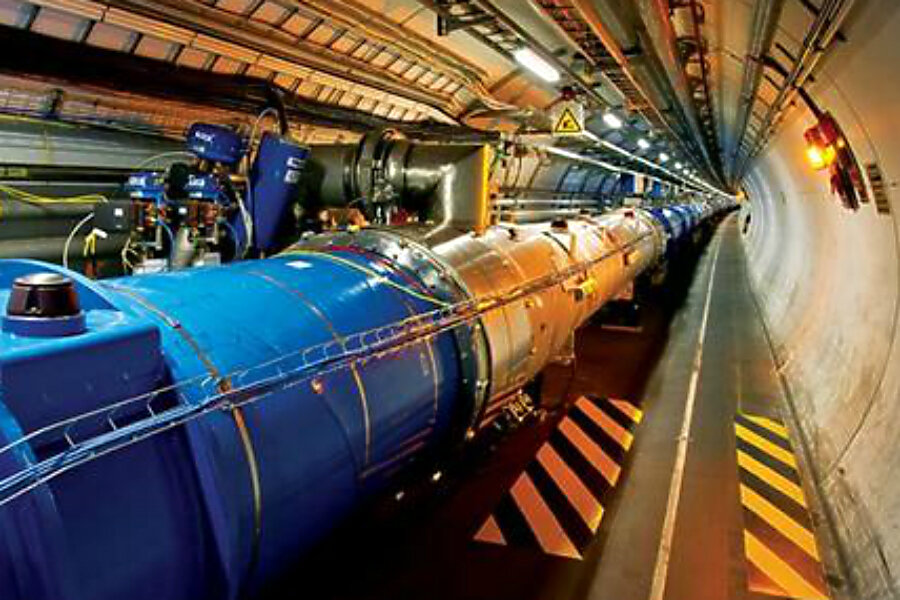What's a pentaquark? And why is this tiny particle a big deal?
Loading...
After 50 years, the hunt is over.
Scientists at the Large Hadron Collider, the world's largest atom smasher, have found proof of the existence of the pentaquark, an elusive subatomic particle that was first proposed to exist more than 50 years ago.
"The pentaquark is not just any new particle," Guy Wilkinson, a spokesperson for the LHC experiment that discovered the pentaquark, said in a statement.
"It represents a way to aggregate quarks, namely the fundamental constituents of ordinary protons and neutrons, in a pattern that has never been observed before in over 50 years of experimental searches. Studying its properties may allow us to understand better how ordinary matter, the protons and neutrons from which we're all made, is constituted." [See Photos of the World's Largest Atom Smasher (Large Hadron Collider)]
The new discovery validates a long-held notion about the nature of matter. In 1964, physicist Murray Gell-Mann proposed that a group of particles known as baryons, which include protons and neutrons, are actually made up of three even tinier charged subatomic particles known as quarks. Meanwhile, the theory went, another group of particles called mesons were composed of quarks and their antimatter partners, antiquarks.
The theory was soon validated by experimental results, and Gell-Mann's work won the Nobel Prize in physics in 1969. But crunching the numbers in Gell-Mann's theory also led to the conclusion that other, more exotic particles could exist, such as the pentaquark: a group of four quarks and an antiquark. Over the past several decades, people have seen hints of pentaquarks in experimental data, but those all turned out to be false leads.
In the current study, Wilkinson and his colleagues examined the decay of particles after collisions in the Large Hadron Collider (LHC), a 17-mile-long (27 kilometers) underground ring beneath Geneva, Switzerland. The team studied how a particular baryon known as lambda B decayed into three other particles: a proton, a particle known as J-psi and a charged kaon.
However, while analyzing data from these collisions, researchers noticed spikes that suggested the lambda B baryons took a pit stop on the way to decaying to these other three particles, transitioning into other, intermediate particles on the way.
"We have examined all possibilities for these signals, and conclude that they can only be explained by pentaquark states," said study co-author Tomasz Skwarnicki, a physicist at Syracuse University in New York.
The new evidence for pentaquarks is much more robust than past hints because the LHC experiment uses a detector that identifies all the final states of the particles after a collision, study co-author Sheldon Stone, a physicist at Syracuse University, told Live Science in an email. As a result, the scientists can use mathematical detective work to better identify the intermediate decay states.
Based on the LHC data, the team concluded that these intermediate particles were pentaquarks made up of two up quarks, one down quark, one charm quark and one anti-charm quark. (Quarks come in six flavors: up, down, top, bottom, strange and charm.) The researchers have now submitted their findings to the journal Physical Review Letters.
The new results not only validate the Standard Model, the dominant physics theory that explains the mess of subatomic particles that make up the world, but they also raise new questions.
For instance, it's still not clear exactly how the pentaquarks are "glued" together. Some theories suggest that constituents of the pentaquark are tightly bound together, while others propose a loose association between the teeny subatomic particles. Understanding how the strong force binding pentaquarks work could be important in other arenas, too.
"This may be important in star formation, for example," Stone said.
Follow Tia Ghose on Twitter and Google+. Follow Live Science @livescience, Facebook & Google+. Original article on Live Science.





